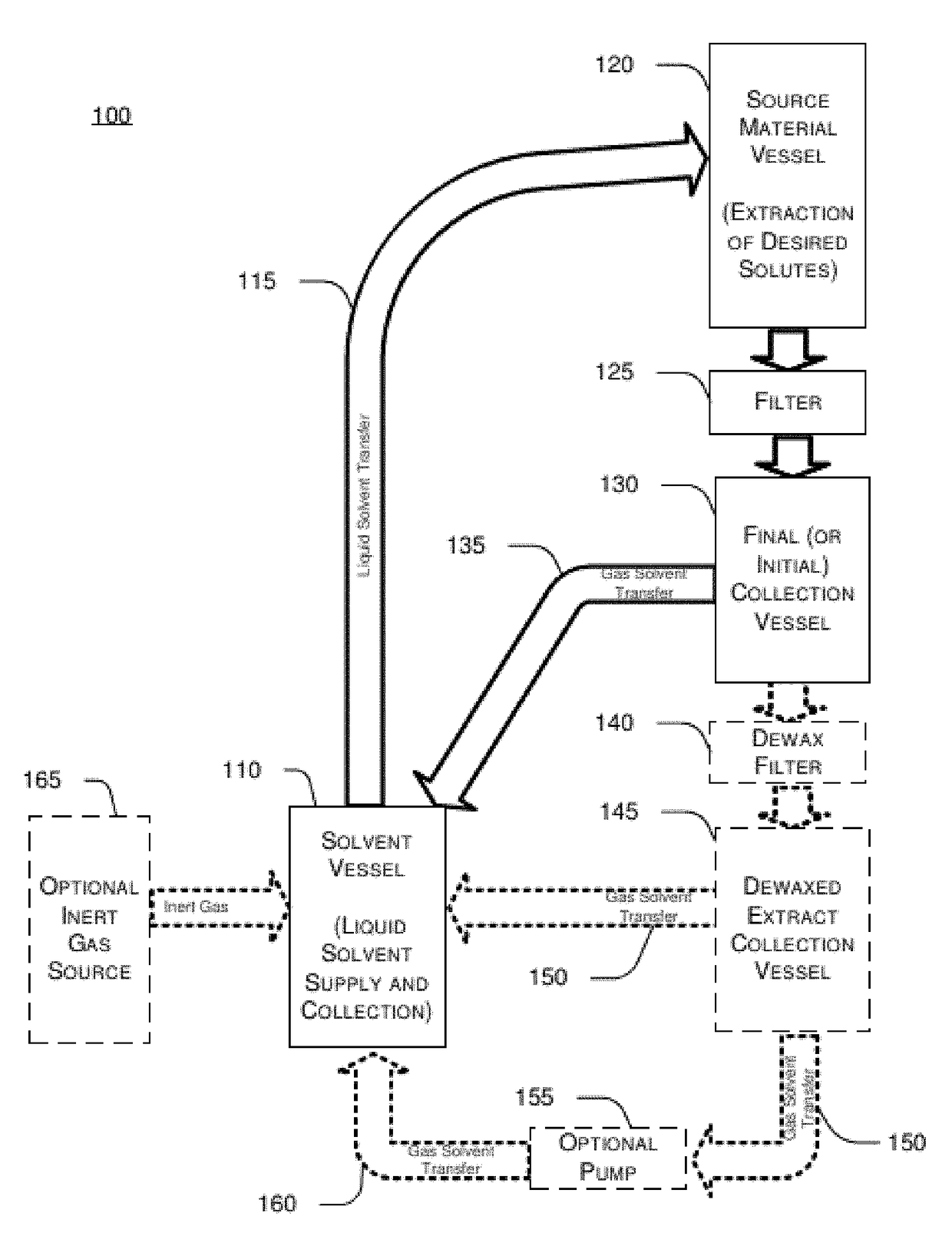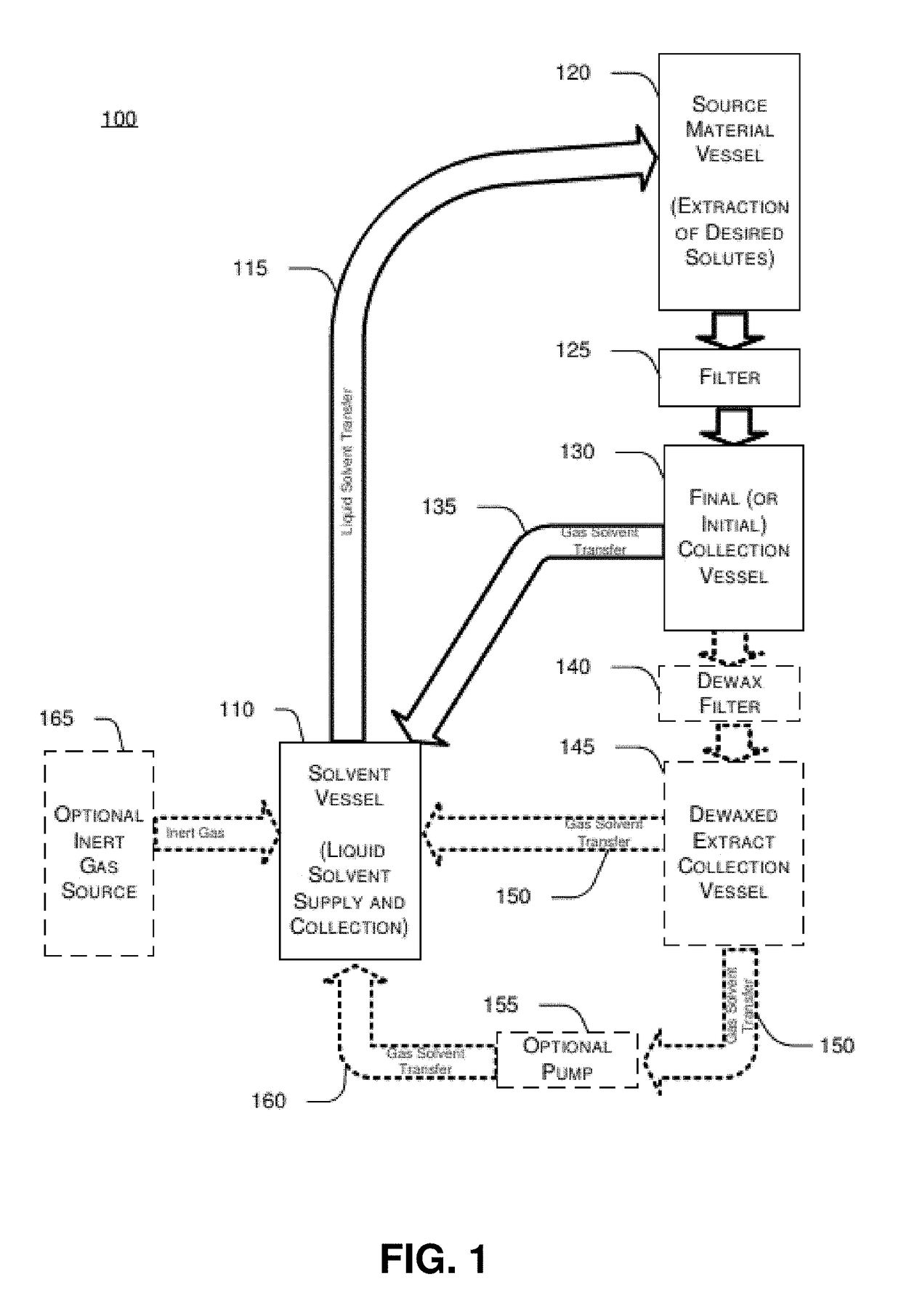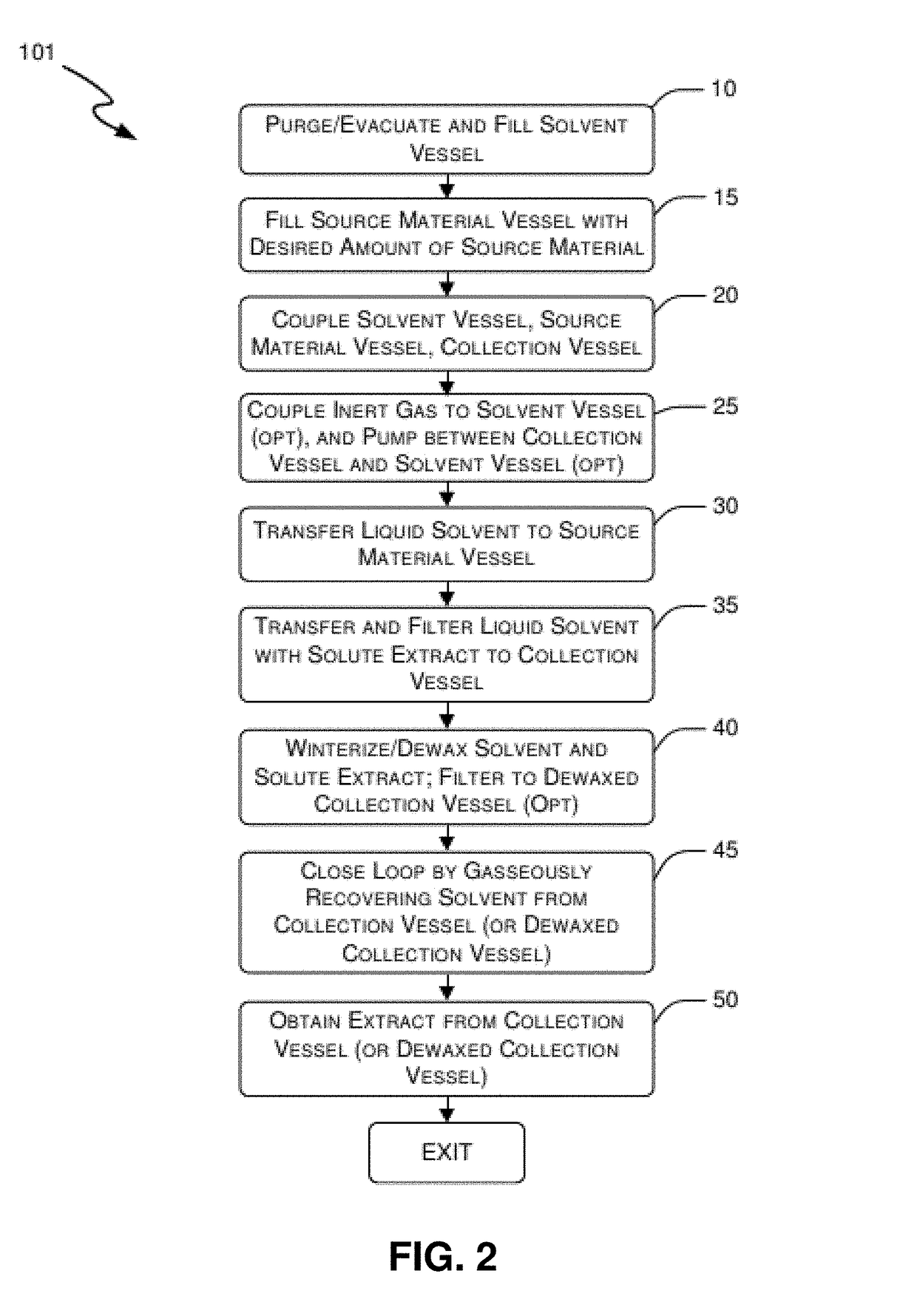Systems and methods for closed loop solvent extraction and purification
a closed-loop solvent and purification technology, applied in the direction of fatty-oil/fat refining, fatty-oil/fat separation, separation process, etc., can solve the problems of high equipment cost or complexity, high cost, and exposure to solvent material which can be toxic, explosive or carcinogenic, so as to reduce the loss of solvent, reduce the risk of safety concerns, and the effect of improving purity
- Summary
- Abstract
- Description
- Claims
- Application Information
AI Technical Summary
Benefits of technology
Problems solved by technology
Method used
Image
Examples
example 1
Closed Loop Solvent Extraction
[0042]FIG. 1 depicts a schematic diagram showing an embodiment of a closed circuit extraction system and FIG. 2 shows a method applied to the schematic. A predetermined amount of liquid solvent is placed within a previously evacuated solvent vessel 110. Any type of liquid solvent that is appropriate for the source material and desired extracts may be utilized. In an embodiment, for example, n-butane is utilized as a solvent for its relatively low cost, general availability, easy liquid and gas phase control, and ability to preserve the desired taste and aroma components (such as terpenes) that are extracted from substances such as cannabis. The source material placed within the extraction vessel 120 (see also FIG. 2, step 15) and is preferentially a ground plant material and may comprise plant matter such as cannabis sativa or hemp. After the source material is placed within the extraction vessel, the solvent vessel 110, extraction vessel 120 and collec...
example 2
Passive Closed Loop Solvent Extraction
[0056]In terms of a general process discussion the following is an embodiment of a process of the present invention to configure and use the system to obtain extracts from source material such as cannabis. The flowchart shown in FIG. 2 along with this schematic in FIG. 1 and the physical diagram FIG. 3 are useful in following the process in view of the particular drawings shown in FIGS. 4-11B.
[0057]The initial step in the process begins by a purging / evacuation and fill step for the solvent vessel. This is accomplished by attaching a vacuum pump to Quick Disconnect B (110k) to pull a substantial vacuum (−25 to −29 HG) on the empty solvent vessel 110 to ensure full evacuation of air.
[0058]While pulling a vacuum, the solvent vessel should be cooled to ensure a quick and smooth transfer of the liquid solvent. This will also increase the level of the vacuum and promote the transfer of the solvent into the container.
[0059]Once a substantial vacuum has...
example 3
Recovery Pump Assisted Closed Loop Solvent Extraction
[0084]Certain embodiments may achieve improved performance through use of mechanical assistance to aid in speed and recovery of the solvent. A mechanical recovery pump utilizes a vacuum and pressure to pull solvent vapor from a collection vessel and move it to a solvent vessel where it is condensed back into a liquid. Note that if a flammable or explosive solvent is being utilized, the recovery pump 155 must be explosion proof and designed for hydrocarbon use.
[0085]The solvent transfer hose 211 should be connected to the Quick Disconnect B 120a on top of the extraction vessel 120 (see FIG. 6), open corresponding ball valve at 120a. Attaching the hose now ensures that a vacuum is pulled on the hose aiding further in solvent transfer.
[0086]Attach one end of Solvent Transfer Hose to the IN port on the recovery pump (not supplied) and attach the other end of the hose to the Quick Disconnect on the conical section of the Collection ves...
PUM
| Property | Measurement | Unit |
|---|---|---|
| temperature | aaaaa | aaaaa |
| temperature | aaaaa | aaaaa |
| temperature | aaaaa | aaaaa |
Abstract
Description
Claims
Application Information
 Login to View More
Login to View More - R&D
- Intellectual Property
- Life Sciences
- Materials
- Tech Scout
- Unparalleled Data Quality
- Higher Quality Content
- 60% Fewer Hallucinations
Browse by: Latest US Patents, China's latest patents, Technical Efficacy Thesaurus, Application Domain, Technology Topic, Popular Technical Reports.
© 2025 PatSnap. All rights reserved.Legal|Privacy policy|Modern Slavery Act Transparency Statement|Sitemap|About US| Contact US: help@patsnap.com



